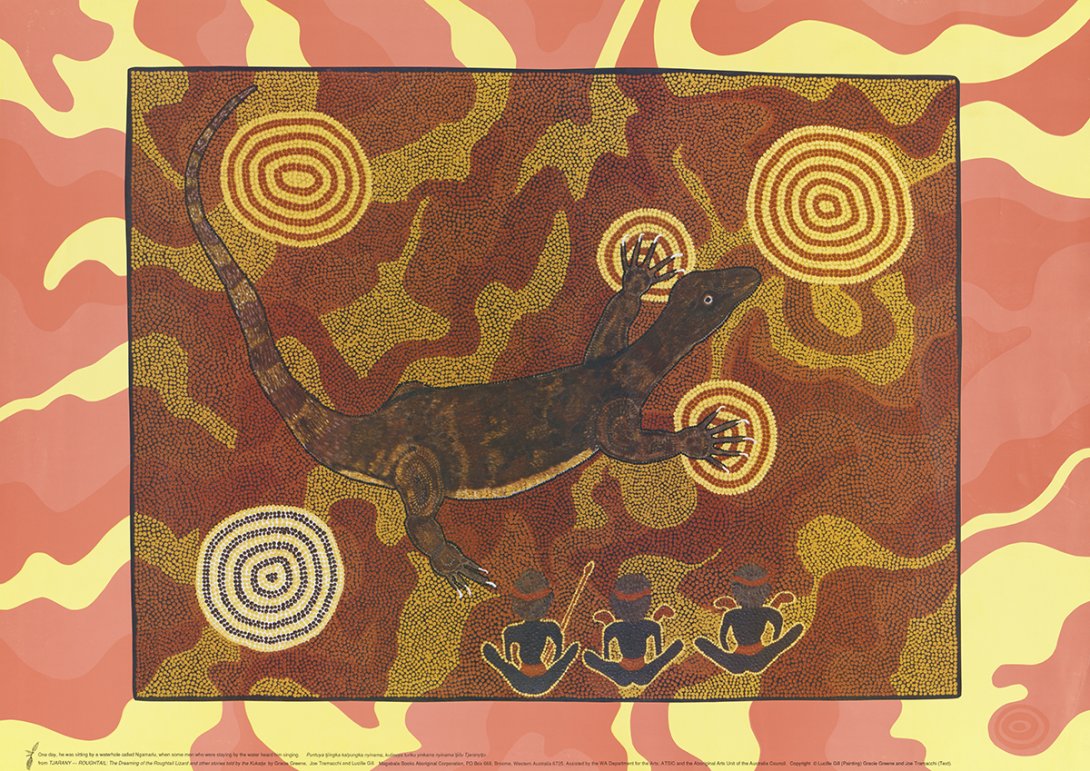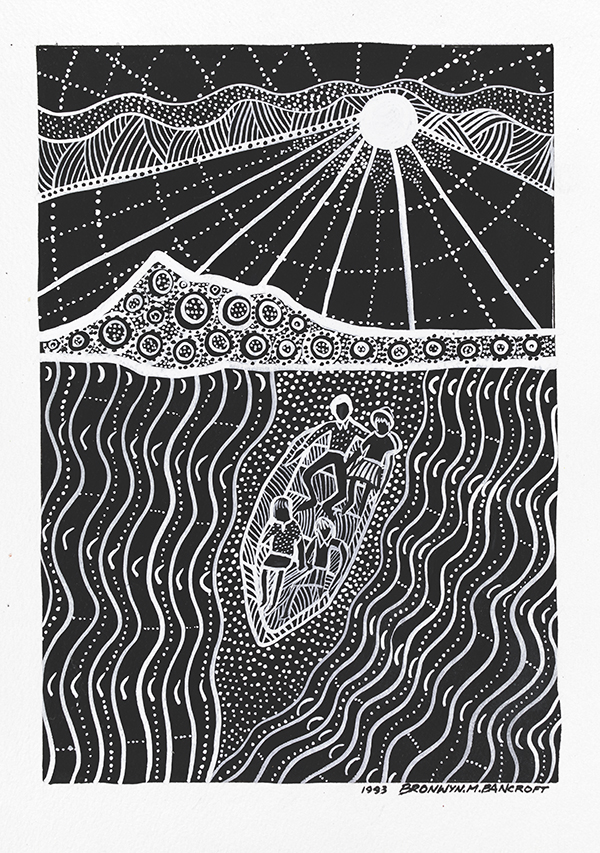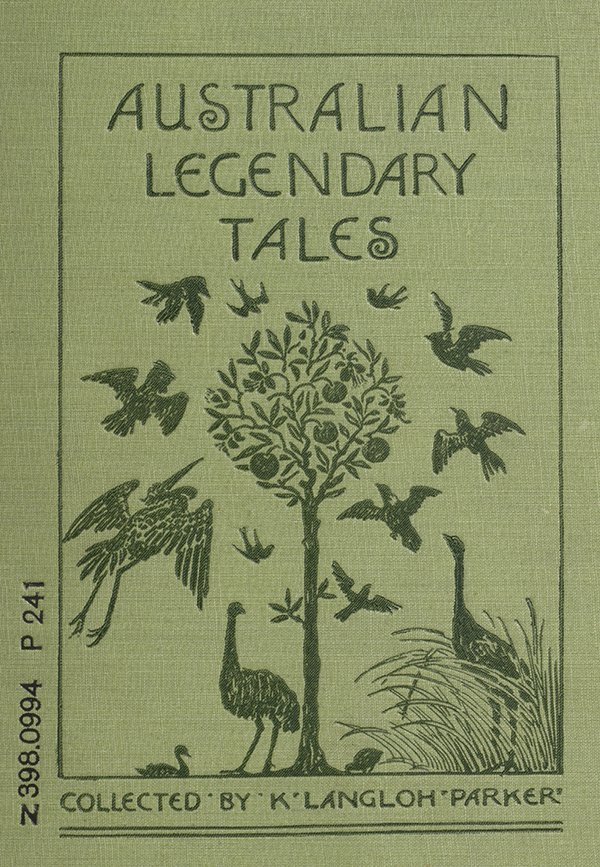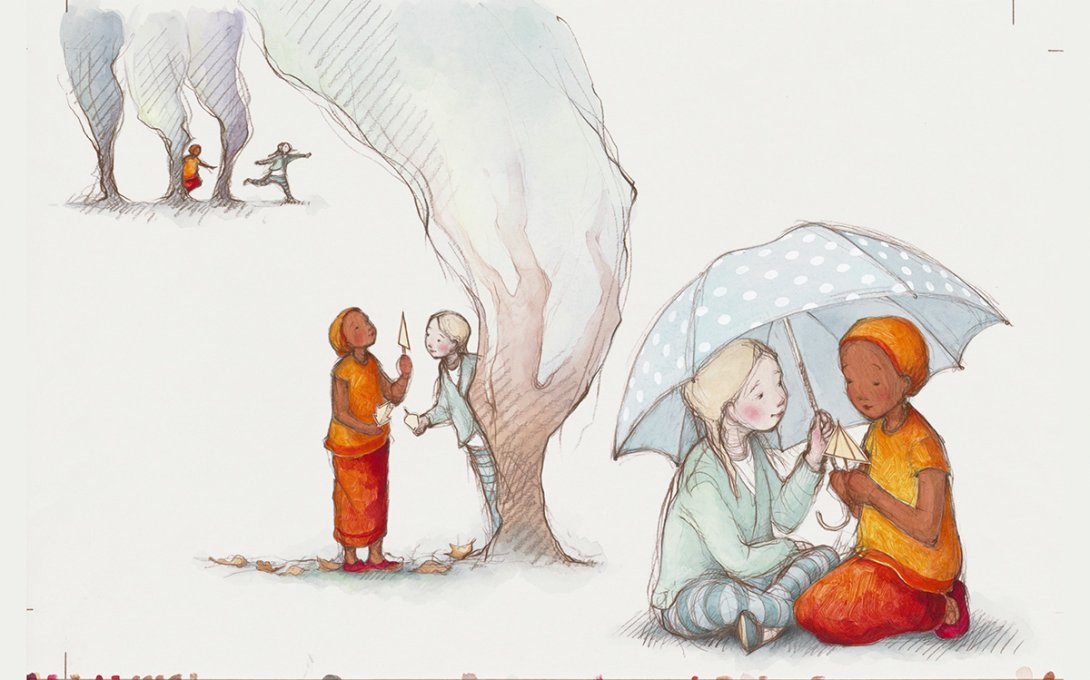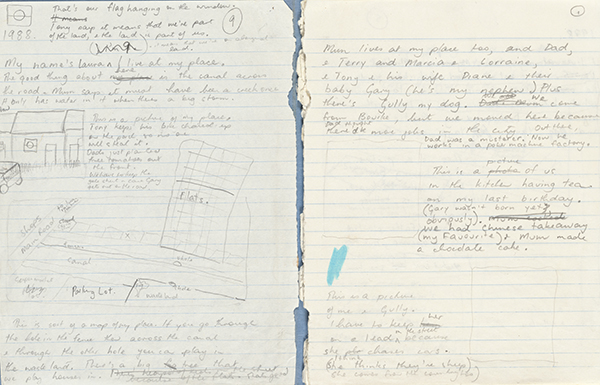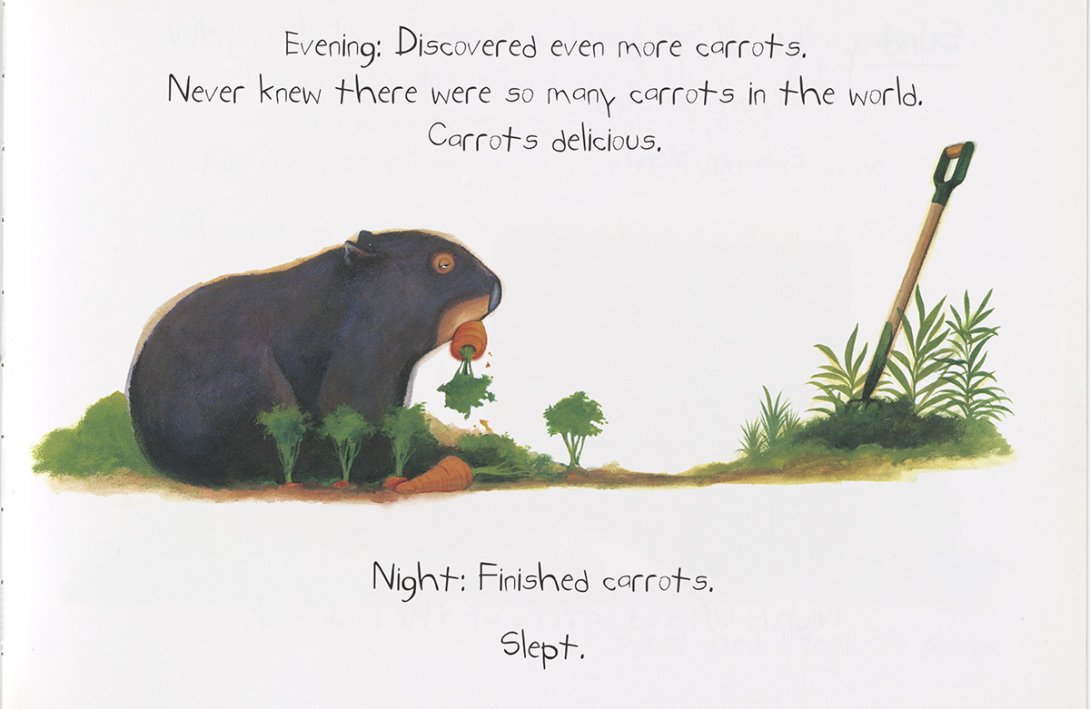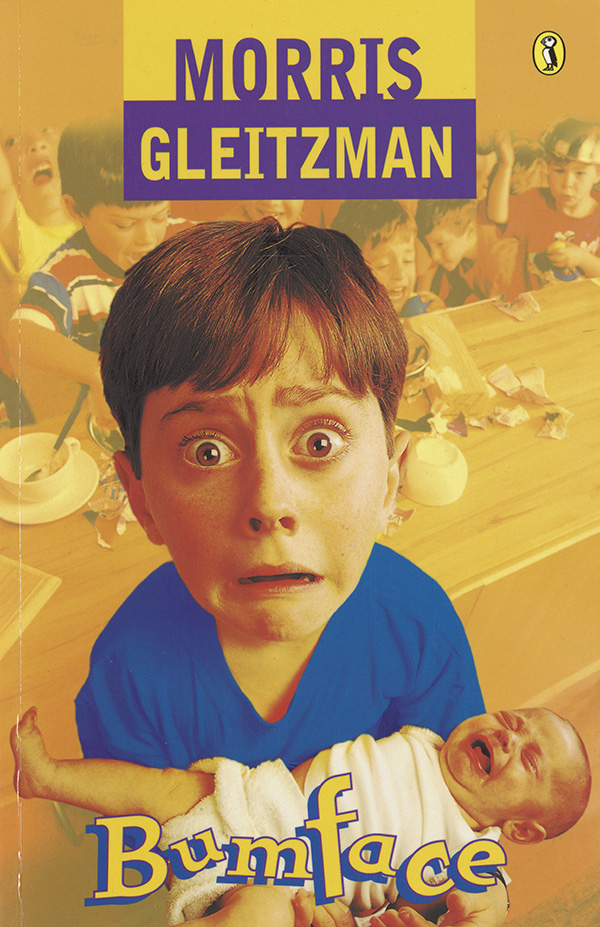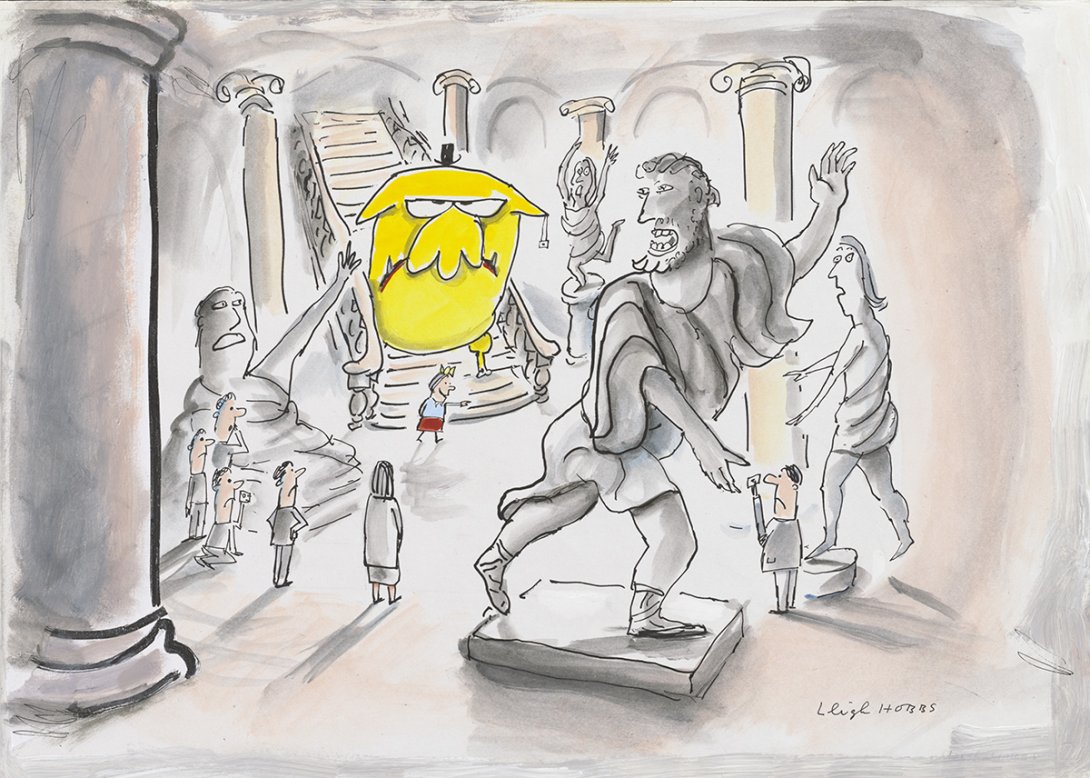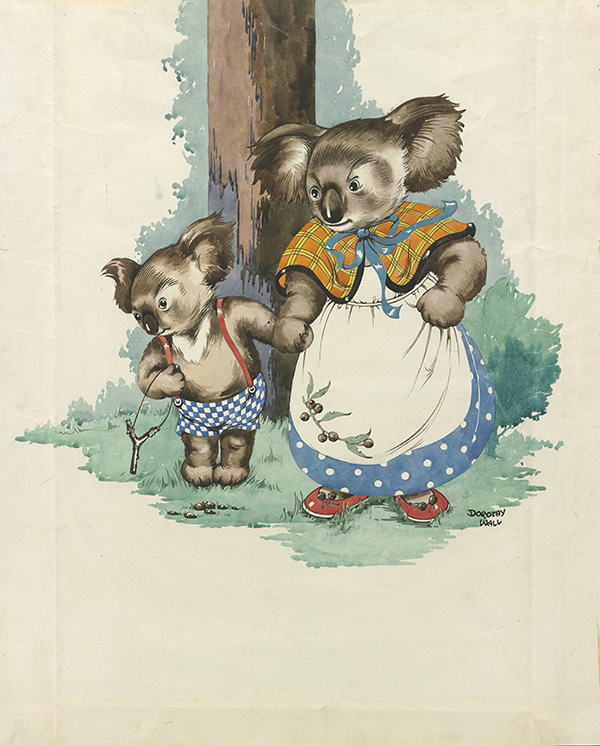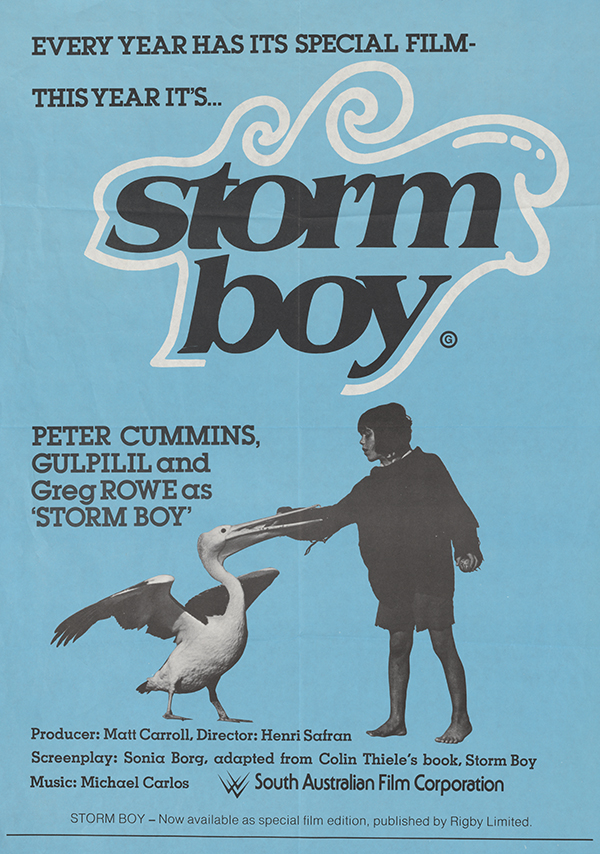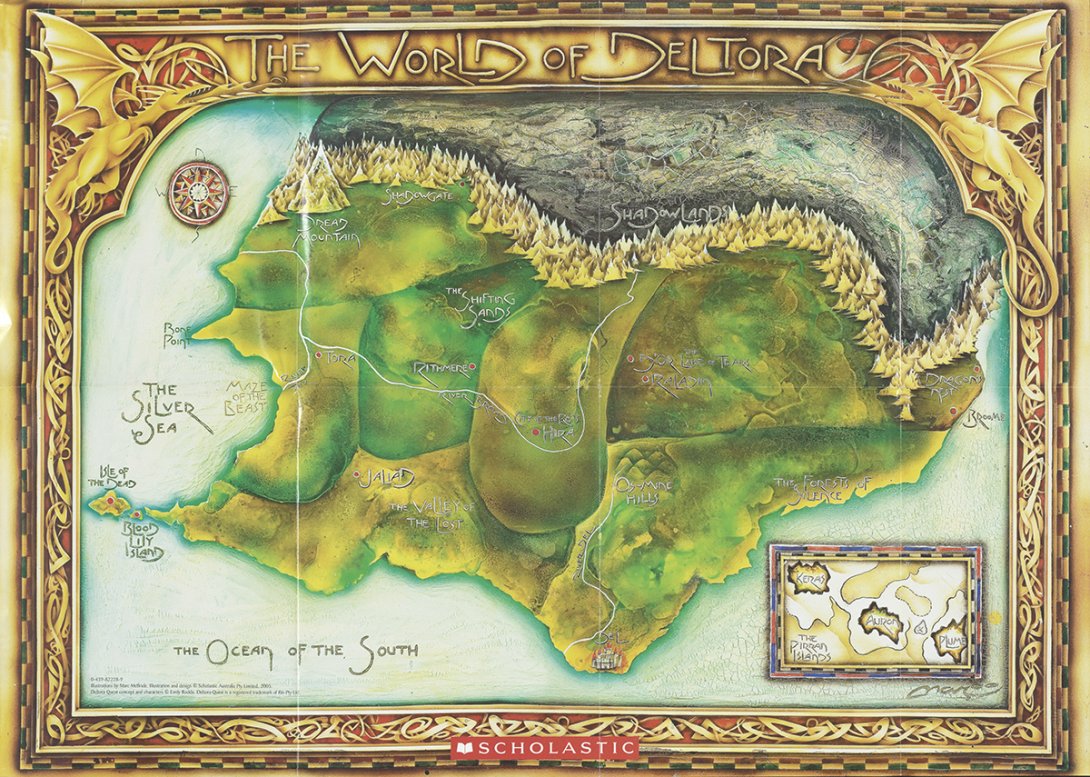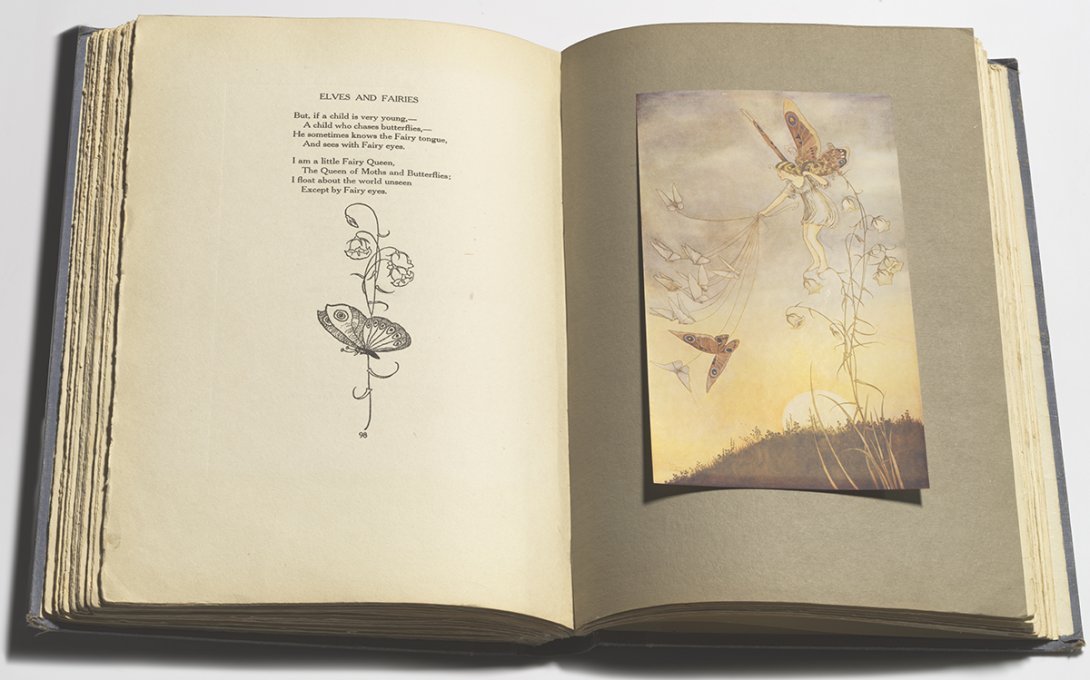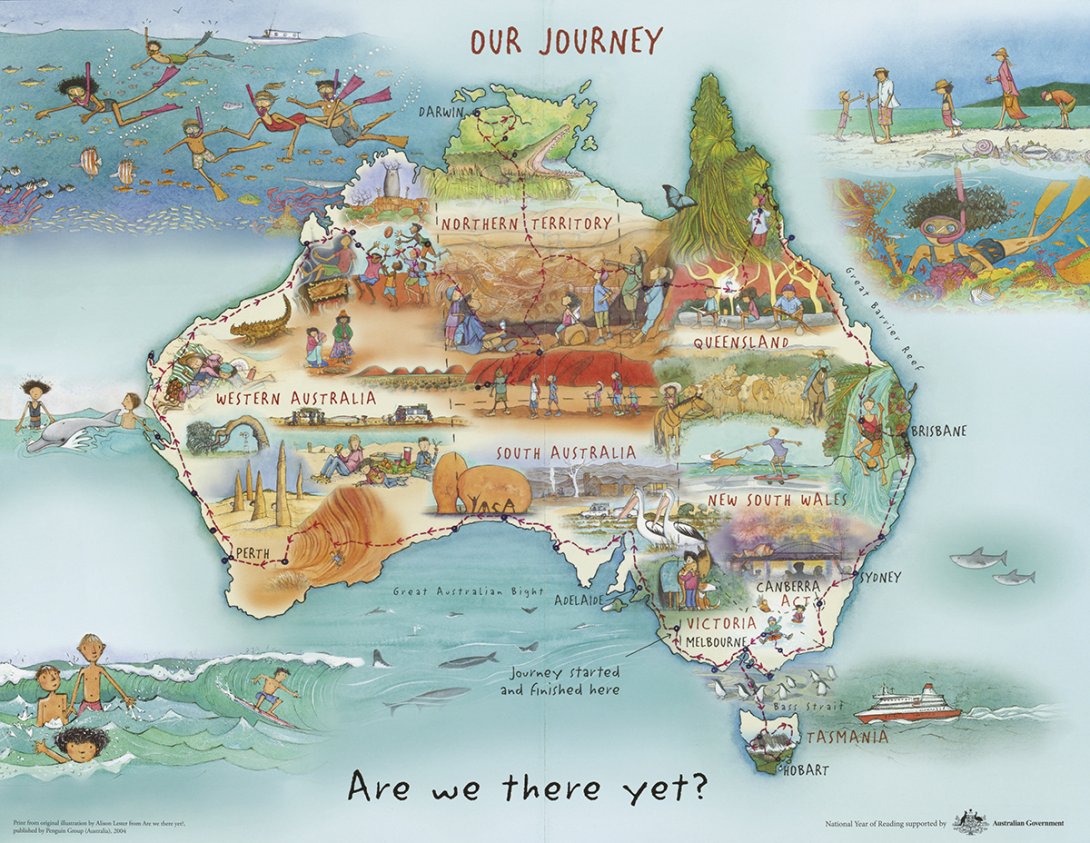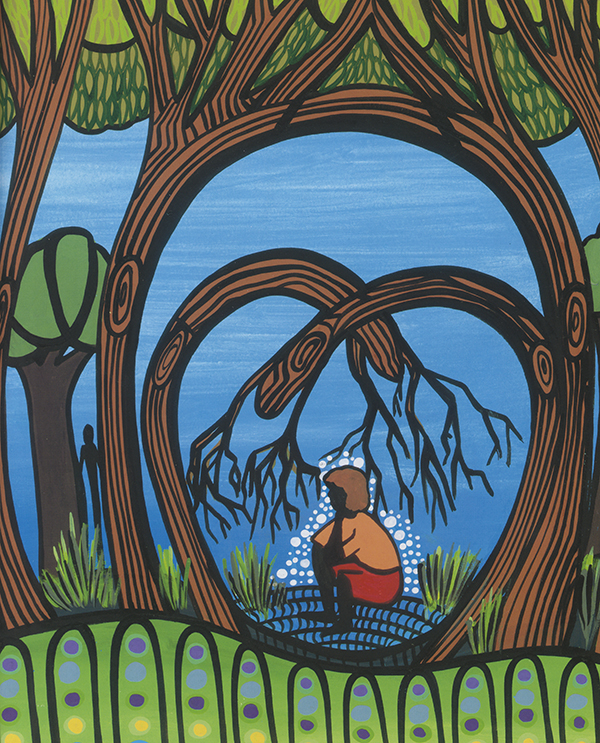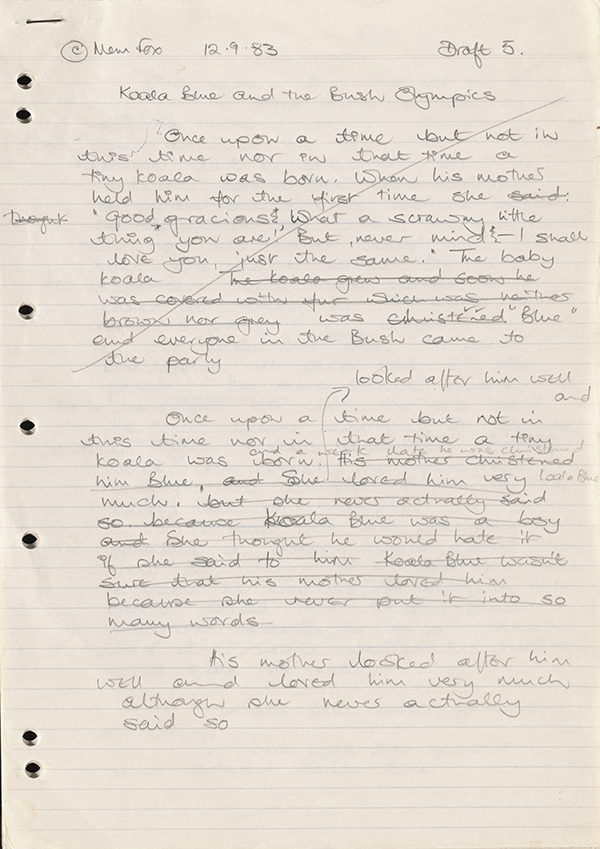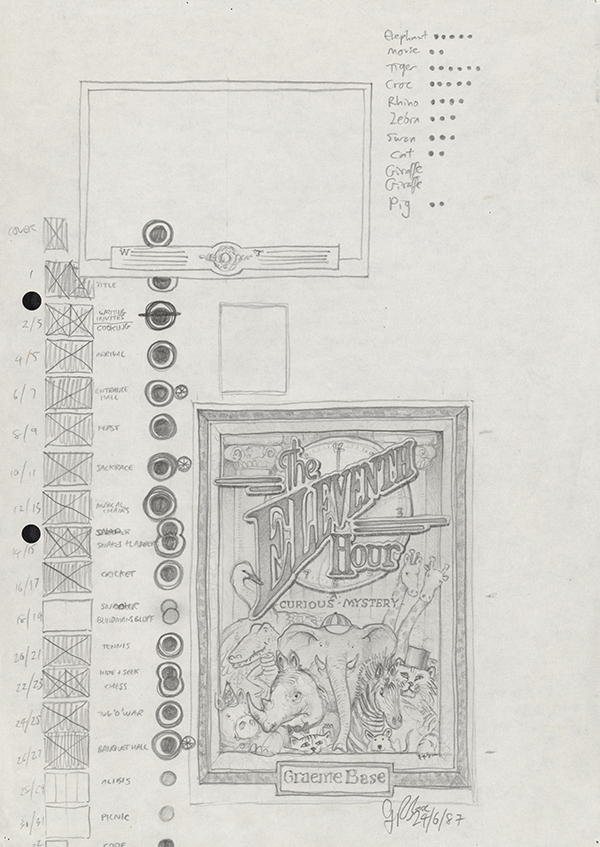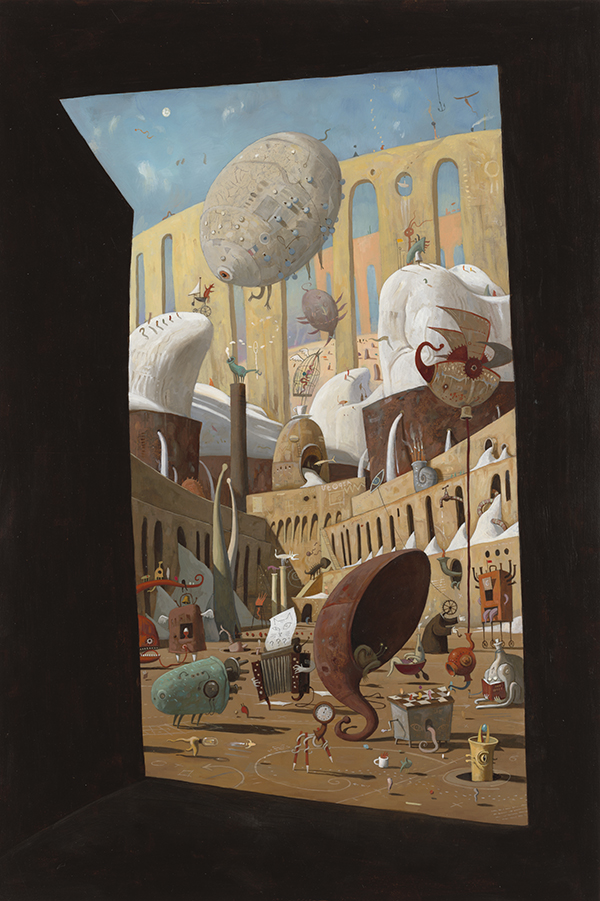Story Time is curated thematically, exploring common themes in Australian children’s literature. Below are some highlights from the exhibition. Get ready to venture into a kaleidoscopic landscape of words, pictures, people, places and animals as Story Time reacquaints you with old friends and introduces you to new ones.
Living Knowledge
Dreaming stories are at the heart of the cultural knowledge and practices of Australian First Nations peoples. Starting in the late 1800s, some of these stories were retold by European Australians in children’s books, providing a new way of sharing this knowledge with a wider audience. There has been a shift—mainly since the 1960s—that has seen First Nations peoples taking the lead in producing books about Dreaming stories and today many are published in Australian Indigenous languages.
Lucille Gill (illustrator), Poster Promoting Tjarany: tjaranykura tjukurrpa ngaanpa kalkinpa wangka tjukurrtjanu (Roughtail: The Dreaming of the Roughtail Lizard and Other Stories Told by the Kukatja), Written by Gracie Green and Joe Tramacchi, (Broome, W.A.: Magabala Books Aboriginal Corporation, c.1992), nla.cat-vn6152039, courtesy Magabala Books
Bronwyn Bancroft, Artwork for Stradbroke Dreamtime, Written by Oodgeroo Noonuccal, 1993, book published by Angus and Robertson, Pictures Collection, State Library Victoria, gift of The Dromkeen Board of Governors, Scholastic Australia, 2012
Catherine Stow (K. ‘Katie’ Langloh Parker) (author), Tommy McRae (illustrator), Australian Legendary Tales: Folk-lore of the Noongahburrahs as Told to the Piccaninnies, (London: David Nutt; Melbourne: Melville, Mullen and Slade, 1896), nla.cat-vn995076
Family, Friends and Identity
Children develop their sense of self through relationships with friends and families. Stories are often shared within these communities, with many exploring the process of growing up and finding a place in the world. From Ethel Turner’s iconic Seven Little Australians (1894) to Bob Graham’s enigmatic picture books and Shaun Tan’s wordless The Arrival (2006), Australia has produced numerous tales exploring these universal ideas. Often grappling with complex themes, these books remind us of the joys and trials of childhood and of the diversity that exists within Australia.
Freya Blackwood, Artwork for My Two Blankets, Written by Irena Kobald, c.2014, book published by Little Hare, an Imprint of Hardie Grant Egmont, National Centre for Australian Children’s Literature
Text copyright © Irena Kobald 2014
Illustrations copyright © Freya Blackwood 2014
Nadia Wheatley, Manuscript of and Notes about My Place, c.1987, book published by Collins Dove, in Papers of Nadia Wheatley, nla.cat-vn2770487
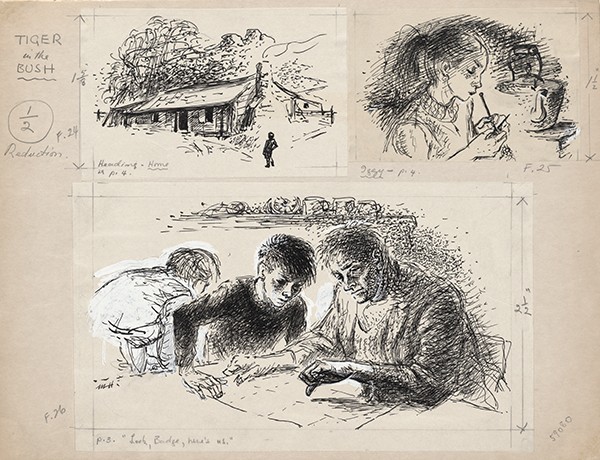
Margaret Horder, Three Artworks for Tiger in the Bush, Written by Nan Chauncy, c.1957, book published by Oxford University Press, in Drawings of Margaret Horder, nla.cat-vn7508771
Funny Tales
We all love to laugh and children giggle a lot more than adults. From Cole’s Funny Picture Book to the extensive list of funny books by Morris Gleitzman and Jackie French, fun and humour are used as tools to encourage a love of reading and to explore and explain the world to young readers. These books also inspire a playful and open mind, not to mention the pure joy that can come from sitting down with a funny, silly or absurd story and sharing a chuckle.
Jackie French (author), Bruce Whatley (illustrator), Page from Diary of a Wombat, (Pymble, NSW: Angus and Robertson, 2002), nla.cat-vn2056319, reproduced by permission of Angus and Robertson, an imprint of HarperCollins
Morris Gleitzman, Bumface, (Ringwood, Vic.: Puffin Books, 1998), nla.cat-vn387359
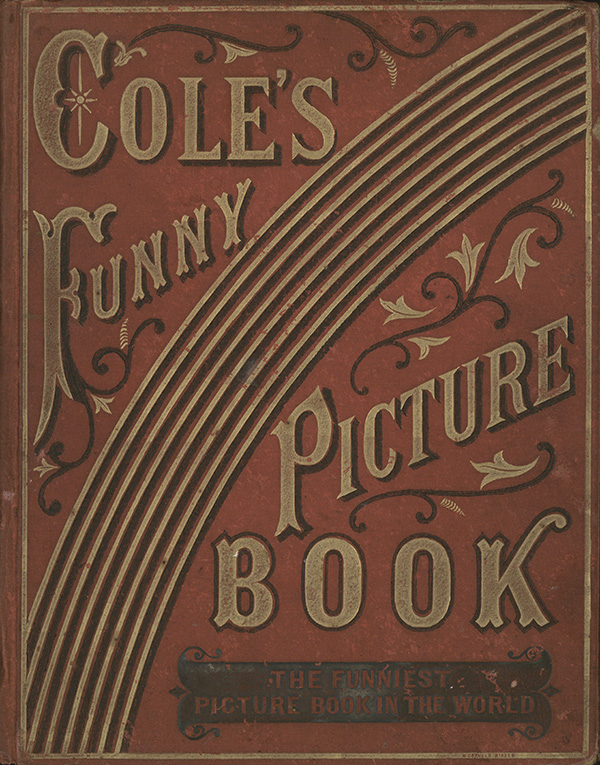
E.W. (Edward William) Cole, Cole’s Funny Picture Book: The Funniest Picture Book in the World, (Melbourne: E.W. Cole, Fancy and Ornamental Printer, 1882), nla.cat-vn7086737
Leigh Hobbs, Artwork for Mr Chicken Goes to Paris: Mr Chicken at the Musée du Louvre, 2009, book published by Allen and Unwin, nla.cat-vn7898114
Environment and Animals
Koalas, kangaroos, gum trees and the ocean are just some of the persistent features of Australian children’s literature. While in many cases there is a celebration of our natural world and its inhabitants, stories often include messages about animal welfare and environmentalism. Some feature animals who share the trials and tribulations of humans. Also prominent are stories that highlight special bonds between people, animals and the environment.
Dorothy Wall, Blinky Bill and Mrs Koala, 1933–1940, book published by Angus and Robertson, pen and ink on paper, Pictures Collection, State Library Victoria, purchased with the assistance of the State Library of Victoria Foundation, 2015
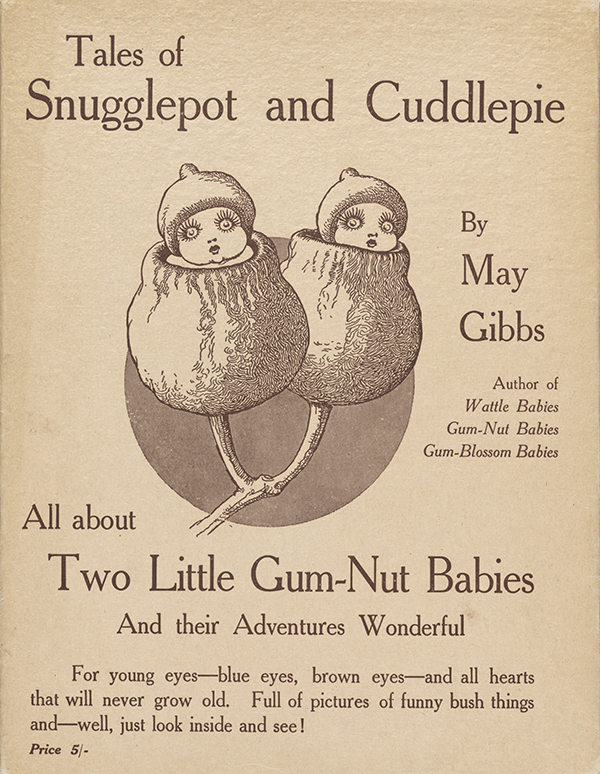
May Gibbs, Snugglepot and Cuddlepie: Their Adventures Wonderful, (Sydney: Angus and Robertson, 1918), nla.cat-vn715110
© The Northcott Society and the Cerebral Palsy Alliance
Poster Promoting the Film Adaptation of Colin Thiele’s Storm Boy, (Glenside, SA: South Australian Film Corporation, 1976), nla.cat-vn5788856
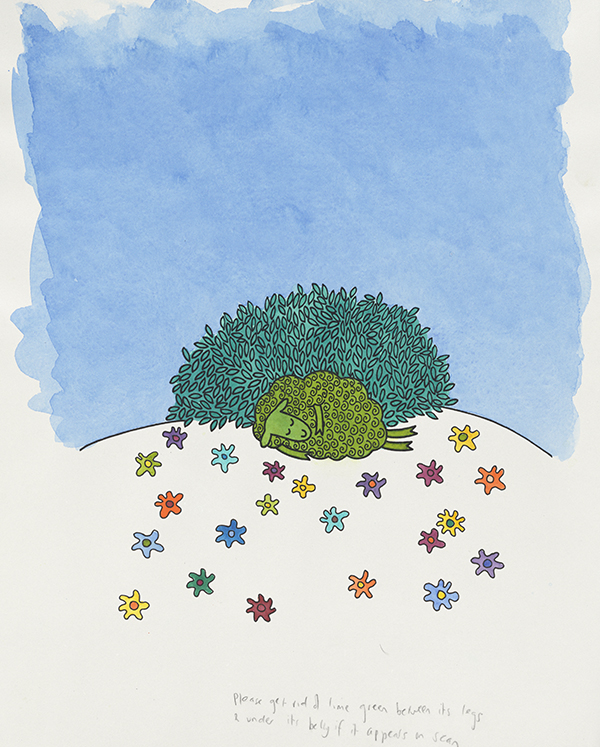
Judy Horacek, Artwork for Where is the Green Sheep?, Written by Mem Fox, 2004, book published by Penguin, in Papers of Judy Horacek, nla.cat-vn4838339, reproduced by permission of Penguin Random House Australia Pty Ltd
Other Worlds
Imagination can take us anywhere. Many children live happily in a world of make-believe, an existence some adults would relish. Authors and illustrators of children’s books bring imaginary and distorted worlds to life, creating works inhabited by curious creatures and magical beings. These include fairy tales and fantasy books, as well as those that add a bit of magic into a story and encourage us to believe that anything is possible.
Marc McBride (illustrator), Map of The World of Deltora, for Emily Rodda’s Deltora Quest Series, (Lindfield, NSW: Scholastic, 2005), National Centre for Australian Children’s Literature
Ida Rentoul Outhwaite (illustrator), Annie R. Rentoul (author), (Arthur) Grenbry Outhwaite (editor), Elves and Fairies of Ida Rentoul Outhwaite, (Melbourne and Sydney: Lothian Book Publishing, 1916), nla.cat-vn2070335, courtesy Stella Palmer
Adventure
Children love adventure, ranging from travelling long distances to simply playing outdoors. From the escapades of Mulga Bill to Sophie Scott’s journey to the Antarctic, we—and our children—have journeyed vicariously with numerous characters through books. Some stories revolve around the silly antics of adults and magical creatures, whereas others explore children’s journeys and those of real and imagined beings. Many of these are fun, while others are scary.
Alison Lester, Our Journey: Are We There Yet?, Print from original illustration by Alison Lester from Are We There Yet?, book published by Penguin, (Middle Park, Vic.: Books Illustrated, 2012), nla.cat-vn5981167
Sally Morgan (author), Ezekiel Kwaymullina (author), Bronwyn Bancroft (illustrator), Page from Sam’s Bush Journey, (Surry Hills, NSW: Little Hare, 2009, reprinted 2010), nla.cat-vn4701760
Copyright © illustration Bronwyn Bancroft 2009 Reproduced by Permission of Little Hare, an imprint of Hardie Grant Egmont
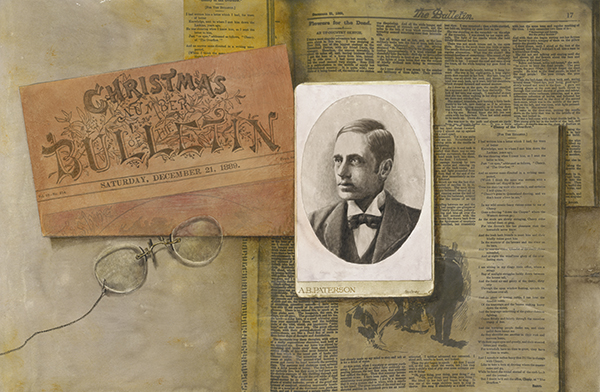
Robert Ingpen, Artwork for Clancy of the Overflow, Written by A.B. ‘Banjo’ Paterson, c.1982, book published by Rigby, in Papers of Robert Ingpen, nla.cat-vn1501947
Creativity
Writing and illustrating a children’s book involves many steps. Sometimes one person takes on both tasks, while at other times an author and an illustrator work together to bring a story to life. Countless drafts, conversations, edits and revisions take place before the final version appears in the form of a book. This fascinating creative process occurs for every story and, by looking at some of the preliminary components alongside final illustrations and published versions, we gain a deeper appreciation of the work that went into it.
Mem Fox, Koala Blue and the Bush Olympics (Draft 5 of Koala Lou), 1983, book published by Ian Drakeford Publishing, in Papers of Mem Fox, nla.cat-vn2761
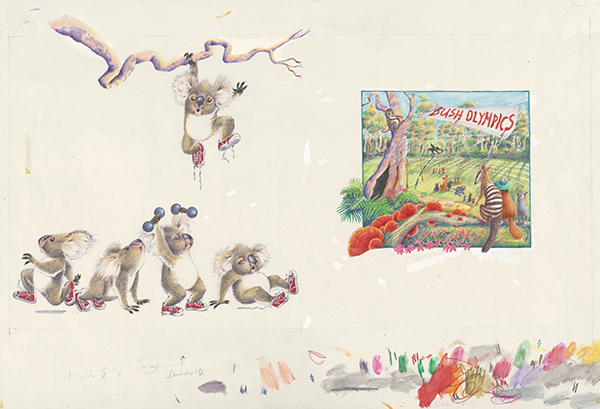
Pamela Lofts, Final Artwork for Koala Lou, Written by Mem Fox, c.1988, book published by Ian Drakeford Publishing, National Centre for Australian Children’s Literature
Reproduced by Permission of Penguin Random House Australia Pty Ltd
Graeme Base, Early Sketch for Cover of The Eleventh Hour, c.1989, book published by Viking Kestral, National Centre for Australian Children’s Literature
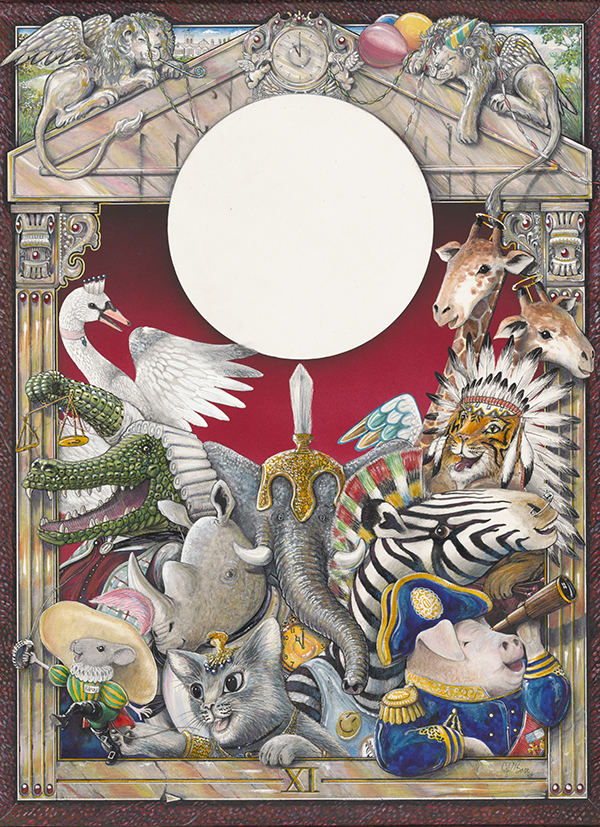
Graeme Base, Artworks of the Cover and Title for The Eleventh Hour, c.1989, book published by Viking Kestral, National Centre for Australian Children’s Literature
Shaun Tan, Artwork for The Lost Thing: Utopia, 1999, Illustration reproduced by permission of Shaun Tan and Hachette Australia
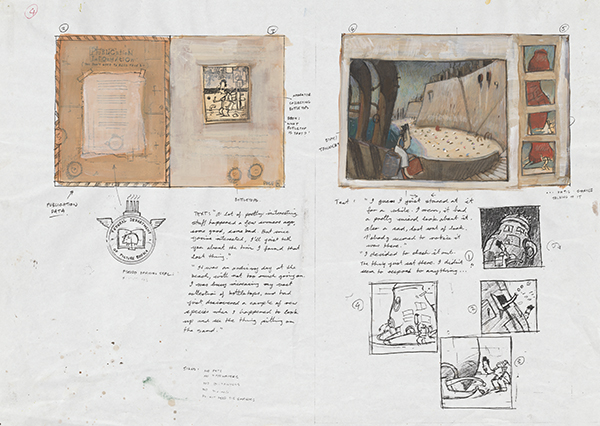
Shaun Tan, Page Layout Sketches with Draft Text of The Lost Thing, 1999, Illustration reproduced by permission of Shaun Tan and Hachette Australia
